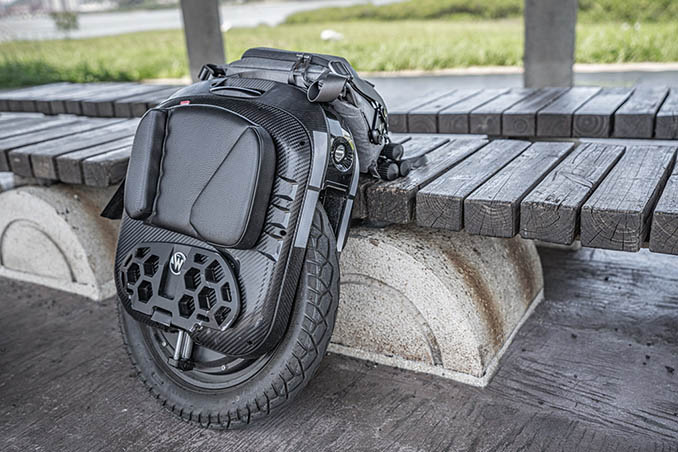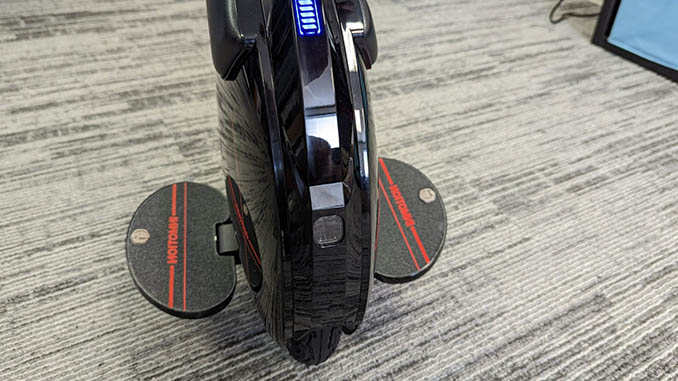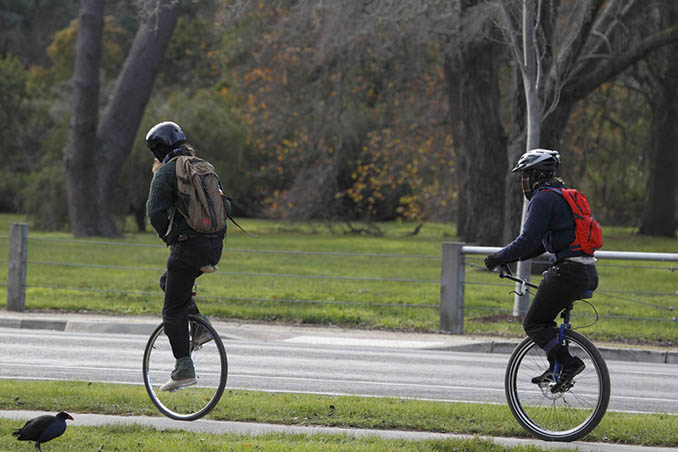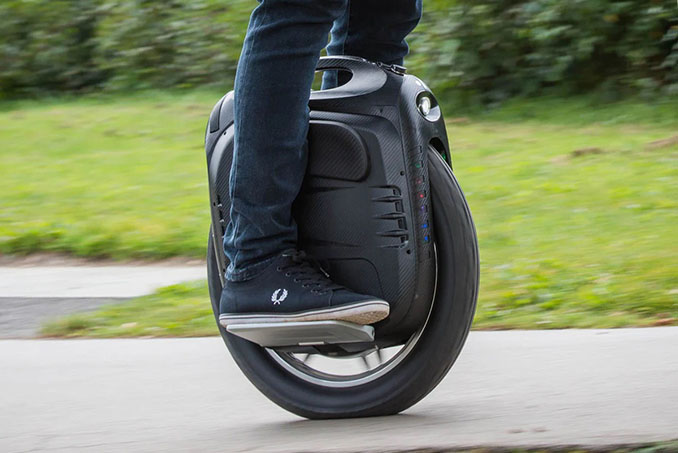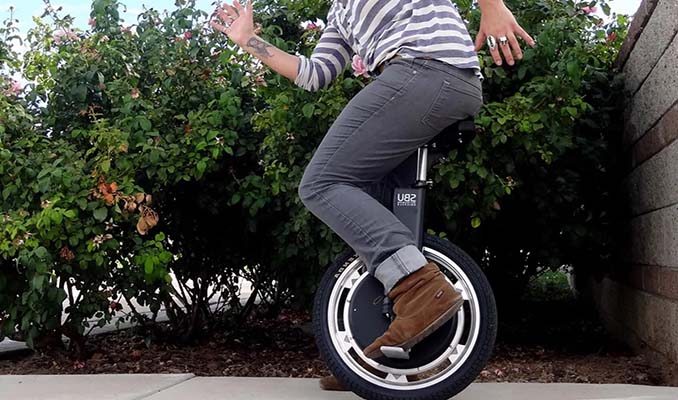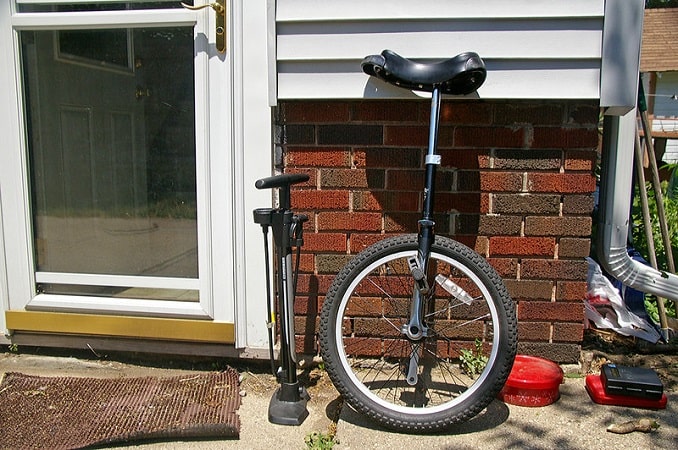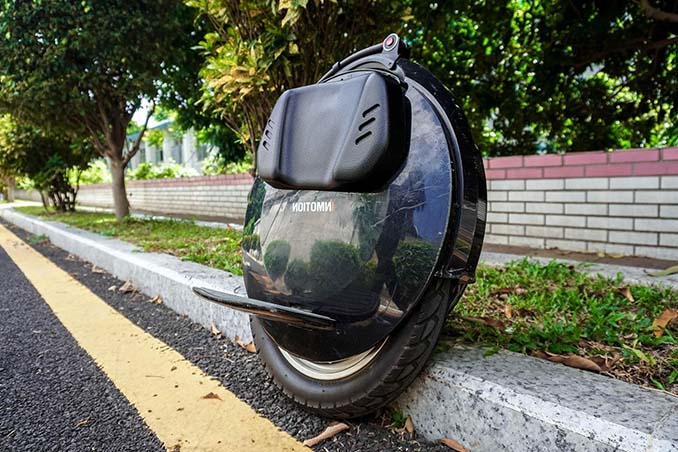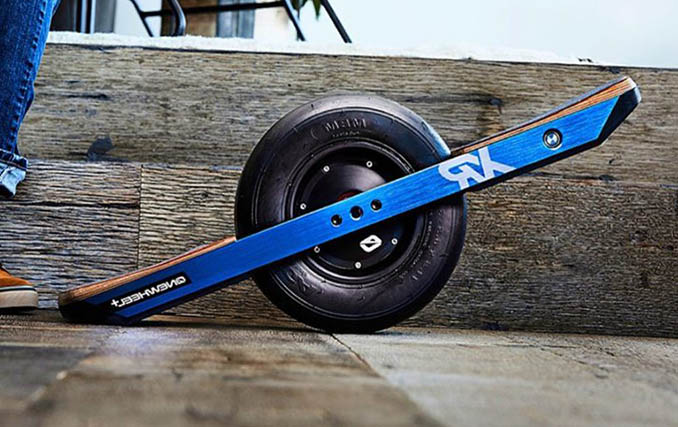Have you ever seen someone gracefully gliding down the street on a futuristic-looking electric unicycle? These compact and stylish personal electric vehicles have gained quite a following in recent years, offering a unique and efficient mode of transportation.
However, before you embark on the journey of owning an electric unicycle, it’s essential to understand the potential challenges that come along with it. In this blog post, we will delve into the disadvantages of electric unicycles, shedding light on aspects that may not be immediately apparent. So, let’s explore both the ups and downs of this thrilling mode of transport.
Related:
- What Are Pros And Cons Of Electric Unicycles?
- Top 10 Benefits of Unicycling for Your Physical and Mental Health
1. Steep Learning Curve and Skill Requirement
When I first set my eyes on an electric unicycle, I was captivated by its sleek design and the freedom it promised. Eager to embark on my electric unicycling adventure, I quickly realized that riding one is not as effortless as it may seem. The learning curve is undeniably steep, requiring dedication, patience, and a willingness to embrace a few falls along the way.
Balancing on a Single Wheel
Achieving stability and balance is the key to mastering an electric unicycle. As a beginner, I found myself struggling to find my center of gravity, often wobbling and fighting to stay upright. The initial attempts were a humbling experience, but with practice, I gradually developed a sense of control and stability.
Uneven Terrain Impact
To truly excel at riding an electric unicycle, it requires more than just the ability to balance. Maneuvering smoothly through various terrains and navigating crowded spaces demands a high level of skill.
Learning to gracefully handle turns, avoid obstacles, and maintain control at different speeds takes time and effort. However, with practice, these challenges can be overcome, and the reward of riding an electric unicycle becomes all the more satisfying.
While the learning process may be daunting, it’s important to remember that everyone progresses at their own pace. What might seem difficult at first eventually becomes second nature with practice and perseverance. So, if you’re up for the challenge, don’t let the steep learning curve discourage you from experiencing the exhilaration of riding an electric unicycle.
2. Limited Speed and Acceleration
As I gained confidence and skill in riding my electric unicycle, I eagerly sought to test its capabilities. However, one aspect that became apparent early on was the limited speed and acceleration compared to other personal electric vehicles. While electric unicycles provide a fun and efficient means of transportation, they do have their speed limitations.
Speed Limitations
Electric unicycles typically have a maximum speed range that varies depending on the model and manufacturer. On average, most electric unicycles can reach speeds of around 12 to 20 miles per hour (19 to 32 kilometers per hour).
While this may be sufficient for commuting or leisurely rides, it falls short in terms of competing with electric scooters, bikes, or even some electric skateboards, which can reach higher speeds.
Acceleration Challenges
Acceleration is another area where electric unicycles may lag behind. While they offer a smooth and controlled ride, the time it takes to reach top speed may not be as quick as some riders would prefer. This can impact the overall thrill and sense of speed that enthusiasts seek when riding personal electric vehicles.
The limited speed and acceleration of electric unicycles can affect various aspects of their usage. For individuals who prioritize quick commutes or enjoy the thrill of high speeds, electric unicycles may not fulfill their expectations.
Additionally, if you frequently travel alongside faster-moving traffic, it’s crucial to consider whether the speed capabilities of an electric unicycle align with your needs and safety requirements.
However, it’s worth noting that the limitations in speed and acceleration are often intentional design choices aimed at prioritizing safety and stability. Electric unicycles are built to provide a comfortable and controlled riding experience, ensuring that riders can maintain balance and maneuverability even at lower speeds.
While the speed may not match that of other personal electric vehicles, electric unicycles still offer a unique and enjoyable way to navigate urban environments.
3. Range Anxiety and Battery Life
One aspect that electric unicycle riders need to be mindful of is the issue of range anxiety and battery life. While electric unicycles offer a convenient and eco-friendly mode of transportation, their limited range can sometimes be a cause for concern.
Understanding Range Anxiety
Electric unicycles typically have a maximum range that varies depending on factors such as battery capacity, rider weight, terrain, and speed. On average, most electric unicycles can cover distances ranging from 15 to 30 miles (24 to 48 kilometers) on a single charge. While this range may be sufficient for shorter commutes or leisurely rides, it can be a drawback for those who require longer journeys or have limited access to charging points.
Range anxiety refers to the apprehension or worries that riders may experience when concerned about running out of battery power during a ride. This can be particularly stressful when traveling long distances or in areas where charging infrastructure is scarce. The fear of being stranded without power can be a significant drawback for individuals relying solely on their electric unicycles for transportation.
Factors Affecting Battery Life
Battery life is a crucial factor to consider when contemplating the use of an electric unicycle. Depending on the model and usage, battery life can vary from one to several hours of continuous riding. Recharging the battery often takes several hours as well, which can be inconvenient if immediate access to a charging point is not readily available.
To overcome range anxiety and maximize the usage of an electric unicycle, careful planning becomes essential. Mapping out routes that align with the available range and considering the proximity of charging stations can help alleviate concerns. Some riders may even choose to carry an extra battery pack to extend the range of their electric unicycle, although this adds additional weight and may require extra preparation.
It’s also worth noting that battery life can be affected by external factors, such as temperature and terrain. Riding uphill, in cold weather, or against strong headwinds can drain the battery more quickly, reducing the effective range. Therefore, riders should be mindful of these variables and make appropriate adjustments to their expectations and plans.
While range anxiety and battery life are valid concerns, it’s important to keep in mind that electric unicycles can still be a reliable means of transportation within their designated range. By understanding the limitations and planning accordingly, riders can enjoy the freedom and convenience electric unicycles offer without unnecessary worries about running out of power.

EUCs require a lot of skill to ride
4. Uneven Terrain and Off-Road Limitations
While electric unicycles excel in urban environments and well-paved surfaces, they can face challenges when confronted with uneven terrain and off-road conditions. It’s important to consider these limitations before embarking on an electric unicycle adventure that involves navigating diverse landscapes.
Challenges of Riding on Uneven Surfaces
One of the primary drawbacks of electric unicycles is their sensitivity to uneven surfaces. Gravel paths, dirt trails, or bumpy roads can pose significant challenges for riders. The single-wheel design and compact form factor of electric unicycles make them less stable and more susceptible to jolts and vibrations compared to other personal electric vehicles with larger wheels or suspension systems.
When riding on uneven terrain, maintaining balance becomes more demanding. The continuous adjustments required to counteract the shifting ground beneath can lead to a less comfortable and more physically taxing riding experience. Riders must be prepared to anticipate obstacles, negotiate bumps, and adapt their riding style accordingly to maintain stability.
Limitations for Off-Road Adventures
Off-road conditions present an even greater challenge for electric unicycles. The lack of specialized tires or off-road capabilities limits their ability to handle rugged terrains like mountain trails or sandy surfaces. Attempting to navigate such conditions can lead to increased risks of falls, loss of control, and potential damage to the electric unicycle.
It’s essential for riders to assess their intended usage and consider the predominant terrain they will encounter. If the majority of your journeys involve smooth city streets or well-maintained bike paths, an electric unicycle can be a suitable choice.
However, if you anticipate frequent encounters with uneven or off-road terrain, you may want to explore alternative options like electric bikes or scooters that offer better handling and stability on diverse surfaces.
Additionally, riders should be mindful of the impact that uneven terrain and off-road conditions can have on the overall lifespan and maintenance requirements of their electric unicycles. Continuous exposure to rough surfaces may result in increased wear and tear, necessitating more frequent maintenance or repairs.
While electric unicycles may have limitations when it comes to uneven terrain and off-road adventures, their strengths lie in urban commuting, maneuverability, and compactness. By understanding these limitations, riders can make informed decisions regarding their choice of transportation and plan their routes accordingly.
5. Limited Carrying Capacity and Storage Options
One of the notable disadvantages of electric unicycles is their limited carrying capacity and lack of convenient storage options. Unlike electric bikes or scooters, which often feature baskets, racks, or compartments for personal belongings, electric unicycles prioritize compactness and simplicity, resulting in restricted carrying capabilities.
Challenges of Carrying Belongings
When riding an electric unicycle, you’ll find that there are limited options for storing your essentials or transporting larger items. Most electric unicycles lack dedicated storage compartments or baskets, leaving riders with the challenge of finding alternative solutions for carrying bags, groceries, or other belongings.
This limitation can be particularly inconvenient for individuals who rely on their electric unicycles for daily commuting or running errands. While it’s possible to use backpacks or cross-body bags to carry smaller items, larger loads or heavier objects can be cumbersome to manage while maintaining balance and stability.
The weight capacity of electric unicycles is another factor to consider. Each model has its specific weight limit, and exceeding this limit can affect the performance and safety of the vehicle. Therefore, riders must be mindful of the combined weight of themselves and any items they carry to ensure they stay within the recommended limits.
To mitigate the challenges posed by limited carrying capacity, riders can explore creative solutions. Using compact backpacks or waist packs can provide a convenient way to carry essentials without compromising stability.
Storage Solutions and Limitations
Additionally, planning ahead and utilizing nearby storage options, such as lockers or storage facilities, can be beneficial when needing to transport larger items or secure belongings while on the go.
It’s important to note that the limited carrying capacity of electric unicycles may not be a significant drawback for all riders. Those who prioritize a minimalist lifestyle or have alternative means of transportation for carrying heavier loads may find this limitation manageable.
However, individuals who rely heavily on their vehicles for various daily tasks may need to consider alternative modes of transportation with more substantial carrying capabilities.
As you evaluate the advantages and disadvantages of electric unicycles, take into account your specific needs, lifestyle, and the types of items you typically need to transport. Finding a balance between convenience, storage solutions, and the compact nature of electric unicycles will be crucial in determining whether they are the right fit for your transportation requirements.

Can You Clean Electric Unicycle with Water
6. Sensitivity to Weather Conditions
While electric unicycles offer a thrilling and efficient mode of transportation, they can be sensitive to various weather conditions, which can impact the overall riding experience.
It’s important to consider these weather-related limitations when deciding to use an electric unicycle as your primary means of transportation.
Rain and Wet Surfaces
Electric unicycles, like most personal electric vehicles, are not designed to be waterproof. Riding in wet conditions, such as rain or on wet surfaces, can pose risks to both the rider and the electric unicycle itself.
Water can damage the internal components and compromise the functionality of the device. The reduced traction on wet surfaces can also increase the likelihood of slips and falls, requiring extra caution and skill while riding.
Snow and Ice
Operating an electric unicycle in snowy or icy conditions is highly discouraged. The lack of specialized tires or traction control makes it extremely challenging to maintain stability on slippery surfaces. The risk of accidents and injuries significantly increases in these weather conditions, making it unsafe to ride.
Extreme Temperatures
Extreme temperatures, whether extremely hot or cold, can affect the performance and battery life of electric unicycles. In extreme heat, the battery may drain faster, reducing the effective range.
Conversely, in extremely cold temperatures, the battery may experience reduced efficiency, leading to shorter rides. It’s essential to consider weather forecasts and plan your rides accordingly to avoid being stranded due to battery limitations.
Strong Winds
Strong gusts of wind can impact the stability and control of an electric unicycle. The single-wheel design and compact form factor make it more susceptible to being pushed or destabilized by strong winds. Riders should exercise caution and adjust their riding style accordingly to maintain balance and safety.
To mitigate the risks associated with weather conditions, it’s advisable to check weather forecasts before heading out on your electric unicycle. Plan your rides during optimal weather conditions to ensure a safer and more enjoyable experience. If you encounter unexpected weather changes while riding, seek shelter and wait for conditions to improve before continuing.
Understanding the limitations imposed by weather conditions can help you make informed decisions about when and where to use your electric unicycle. Consider having alternative transportation options available for adverse weather situations to ensure your safety and convenience.
7. Cost Considerations and Potential Expenses
While electric unicycles offer a unique and thrilling mode of transportation, it’s important to consider the cost implications and potential expenses associated with owning and maintaining one. Here are some key factors to keep in mind:
Initial Investment
The cost of purchasing an electric unicycle can vary depending on the brand, model, and features. Generally, electric unicycles range in price from a few hundred to several thousand dollars.
Higher-end models with advanced technology and longer battery life tend to be more expensive. It’s essential to set a budget and research thoroughly to find a model that aligns with your requirements and financial capacity.
Accessories and Safety Gear
To ensure a safe and enjoyable riding experience, investing in appropriate safety gear is crucial. This may include a helmet, knee and elbow pads, wrist guards, and reflective clothing for increased visibility. The cost of these accessories should be factored into your budget, as they are essential for rider safety.
Maintenance and Repairs
Electric unicycles, like any mechanical device, require regular maintenance to keep them in optimal condition. This may include tire inflation, brake adjustments, and cleaning.
While routine maintenance can be done at home, more complex repairs may require professional assistance. It’s important to consider the potential costs of maintenance and repairs over the lifespan of your electric unicycle.
Battery Replacement
The battery is a crucial component of an electric unicycle, and its performance will gradually degrade over time. Depending on usage and charging habits, the battery’s lifespan can vary. Eventually, you may need to replace the battery, which can be a significant expense. Researching the battery life and availability of replacements for your specific model is essential for long-term planning.
Insurance and Theft Prevention
Considering insurance coverage for your electric unicycle is advisable, especially if you plan to use it frequently or in high-traffic areas. Theft prevention measures, such as investing in sturdy locks or GPS tracking devices, can also be considered to safeguard your investment. These additional costs should be factored into your overall budget.
Charging Costs
While charging an electric unicycle typically incurs minimal electricity costs, it’s worth considering if you plan to charge frequently or if electricity rates are high in your area. Monitoring and managing your charging habits can help minimize any associated costs.
By carefully assessing these cost considerations and potential expenses, you can make an informed decision about the financial feasibility of owning an electric unicycle. It’s important to create a budget that encompasses the initial investment, ongoing maintenance, and any additional expenses that may arise.
8. Social Acceptance and Public Perception:
While electric unicycles offer a unique and efficient mode of transportation, they can face challenges when it comes to social acceptance and public perception. Understanding these dynamics is important for riders to navigate public spaces with respect and consideration for others.
Unfamiliarity and Curiosity
Electric unicycles are still relatively uncommon compared to traditional bicycles or scooters. As a result, many people may be unfamiliar with them and curious about their functionality. This can lead to encounters with curious onlookers who may approach you with questions or want to try riding your electric unicycle.
While this curiosity can be positive, it’s important to be prepared to answer inquiries and politely decline requests if you’re not comfortable lending your device.
Pedestrian Spaces and Etiquette
In some areas, there may be confusion or differing opinions regarding where electric unicycles are allowed to be ridden. While they share similarities with bicycles, electric unicycles may not always be classified or regulated in the same way.
It’s crucial for riders to familiarize themselves with local laws and regulations regarding the use of electric unicycles on pedestrian paths, bike lanes, and roads. Respecting these guidelines and demonstrating courteous behavior when sharing spaces with pedestrians and cyclists helps to maintain positive public perception.
Noise and Disturbance
Electric unicycles, like other electric vehicles, are generally quiet in operation. However, depending on the model and terrain, they may produce some mechanical noise or tire vibrations.
While this noise is typically minimal, it’s important for riders to be aware of their surroundings and be considerate of noise-sensitive areas, such as parks, residential neighborhoods, or quiet outdoor spaces.
Safety and Perception
Electric unicycles can be seen as a relatively new and unconventional form of transportation. Some individuals may perceive them as less safe or more prone to accidents compared to bicycles or scooters.
Demonstrating responsible riding behavior, wearing safety gear, and following traffic rules can help dispel any negative perceptions and contribute to a positive image of electric unicycle riders in public spaces.
To foster social acceptance and positive public perception, it’s crucial for electric unicycle riders to be respectful, considerate, and mindful of their surroundings.
Engaging in open and friendly communication when approached by curious onlookers and adhering to local regulations and etiquette will contribute to a harmonious coexistence with other pedestrians, cyclists, and motorists.
Conclusion
In conclusion, electric unicycles have several disadvantages that potential riders should consider. These include the steep learning curve and skill requirement, limited speed and acceleration, range anxiety and battery life concerns, limitations on uneven terrain and off-road conditions, limited carrying capacity and storage options, and social acceptance challenges.
While electric unicycles offer unique benefits, such as maneuverability and compactness, it’s important to weigh these drawbacks against your specific transportation needs and preferences before making a decision.

